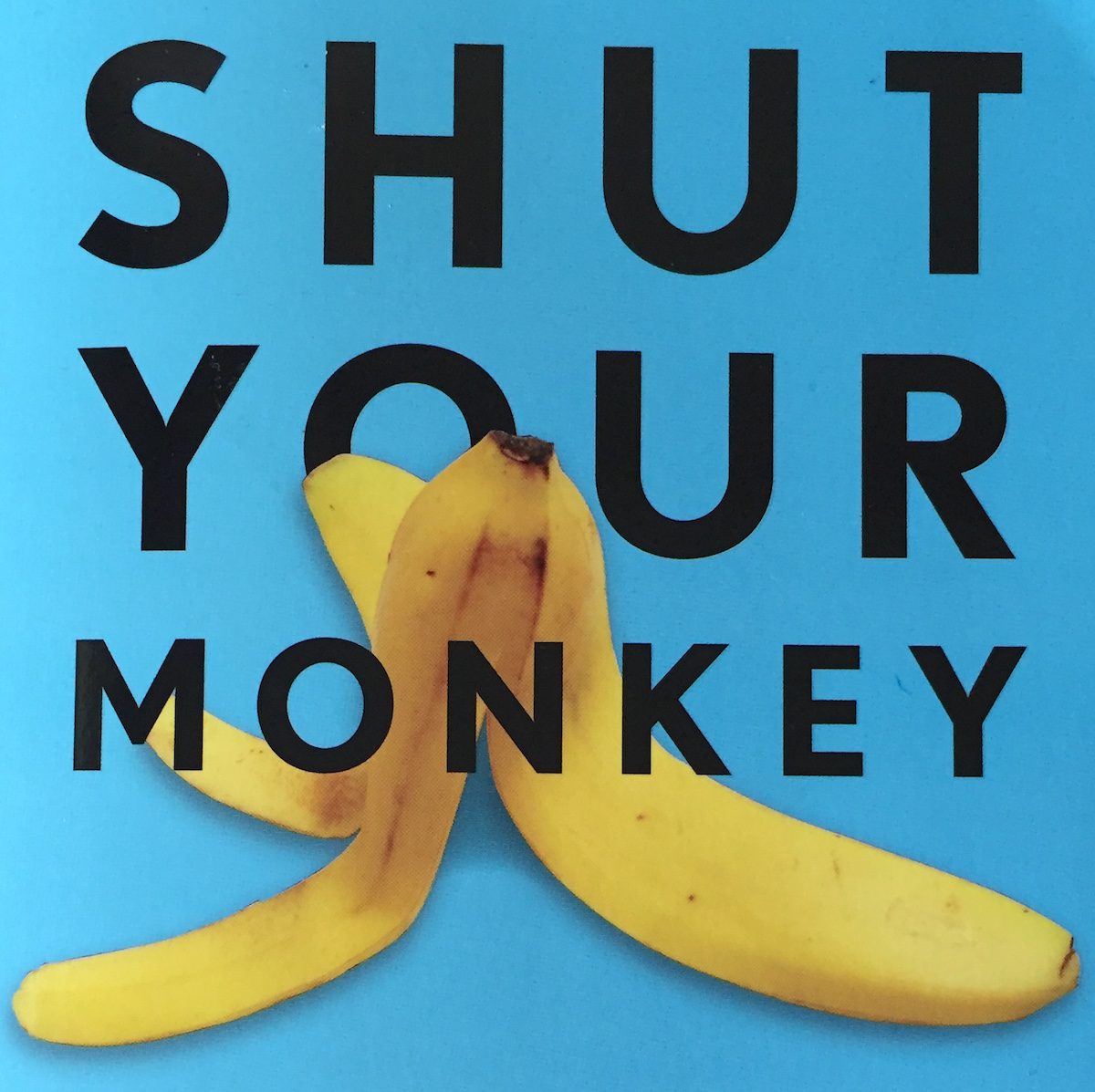There are a lot of things that can hold art teachers back. Although many of us would say we have the best job in the world, that doesn’t mean it’s not difficult at times. Unsupportive administration, discouraging evaluation processes, extra duties, and a general lack of appreciation can all contribute to feelings of self-doubt.
Am I even in the right profession?
Am I really making a difference in the lives of my students?
Why did I ever think I could be good at this?
If you’ve ever thought along these lines, know that you’re not alone. Most people have. My advice to you?
Shut. Your. Monkey.
What? Shut your monkey? What does that even mean?
Let me explain.
According to creativity guru and bestselling author, Danny Gregory, each of us has a hypercritical voice inside our head making us question just about everything we do. Danny personifies this voice as a monkey. Or, more specifically, “like Gollum…but meatier and covered in grey-brown fur that’s fairly oily, like an unwashed mutt.”

Although funny to think about, the monkey can become a serious problem, especially for creative people. Think about the times you’ve wanted to start something creative but stopped yourself because of self-doubt. How many of your best ideas never get the chance to come to fruition? What haven’t you tried in your classroom? What haven’t you tried in your personal life?
See what I’m getting at?
Luckily, Danny’s new book, Shut Your Monkey, is here to help. In it, Danny speaks about your critical inner voice and how you can combat it. Today I’m sharing three of his best pieces of advice so you can get on with your creative endeavors.
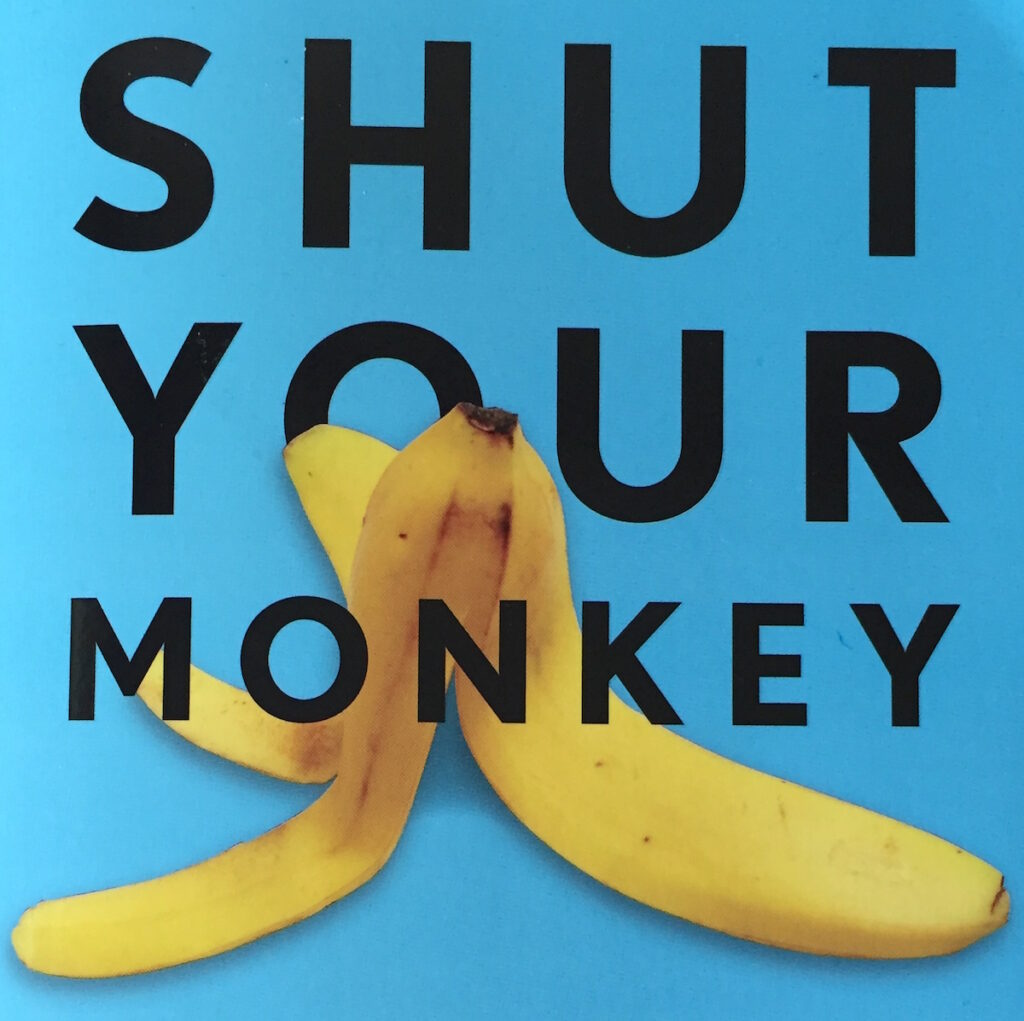
However, before we jump in, I must warn you, taming your monkey will not be easy. According to Danny, your monkey is really “…the hard-wired, deep-dyed voice of fear.” This voice likes to make habits, and habits are hard to break. But, Danny says, your monkey “can become an increasingly unimportant part of you, like your appendix…Like an old, corrosive friend you are slowly losing touch with.” Let’s see how.
Here are 3 proven ways to shut your monkey.
1. List your accomplishments.
One of my favorite techniques in the book is also the simplest. The idea is to set up a scoreboard between you and the monkey. First, write down a list of all your accomplishments. Include everything you can think of. This might include hardships you’ve overcome, a special note from a student or parent, a job title, a write-up in the local paper, or anything else you feel is important. At this point, you might be feeling pretty good. Great! You can stop here.
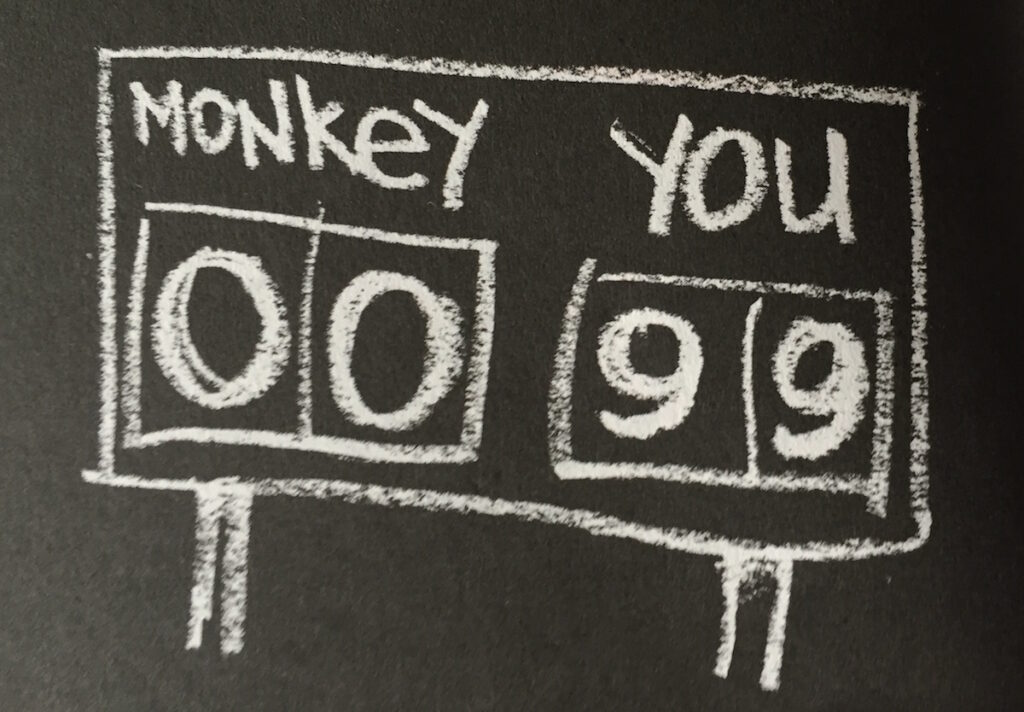
However, if you still need more evidence, also write down your failures. Then write down what you’ve learned from those failures. Your list of failures will not only be shorter, it may illuminate just how those failures have led to successes.
Danny suggests keeping this scoreboard in a place where you can look at it when you need some perspective.
2. Use the monkey as a tool for self-reflection.
Social media makes it easier than ever to compare ourselves to others. Danny told me, “Social media opens you up to the world. On the negative side, that means a lot of critics can show up and judge your work and opinions. It also means you have lots of opportunity for feeling competitive or worthless when you see what others are capable of.”
If you’re part of social media groups with other art teachers, you may feel these things often. With the constant barrage of perfect projects, dynamic lessons, and stunning art shows, it’s easy to feel discouraged.
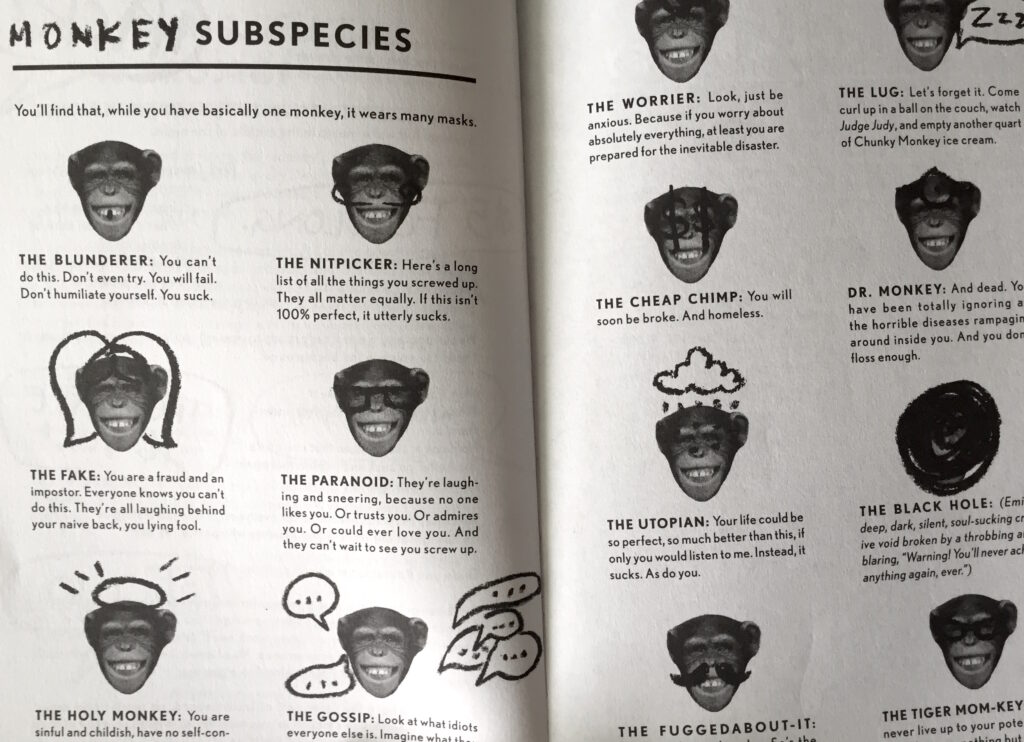
One helpful technique to use when you’re feeling down is to talk to yourself as you would a friend. If your friend was having a hard day or was dealing with disappointment, you would never tell them that they’re stupid and worthless, so why say those things to yourself?
Instead, use your feelings of self-doubt as an opportunity for reflection. Listen to your monkey. What is it actually saying? Why do you feel disappointed or scared? Maybe you need to brush up on your own drawing skills to better teach perspective to your students. Maybe you need to better utilize your time at school to make room for your own creative endeavors at home. Maybe you need to spend some time redesigning your resume so potential employers take note.
Getting at the heart of why you’re feeling down or scared can allow you to find solutions to your problems.
3. Roll up your sleeves, and just do the work.
If this last tip sounds deceptively simple, that’s because it is. Your nagging thoughts actually wear pathways in your brain. So when you try new things, the criticism automatically starts piling up. The good news is that with practice, you can change the way your brain works.
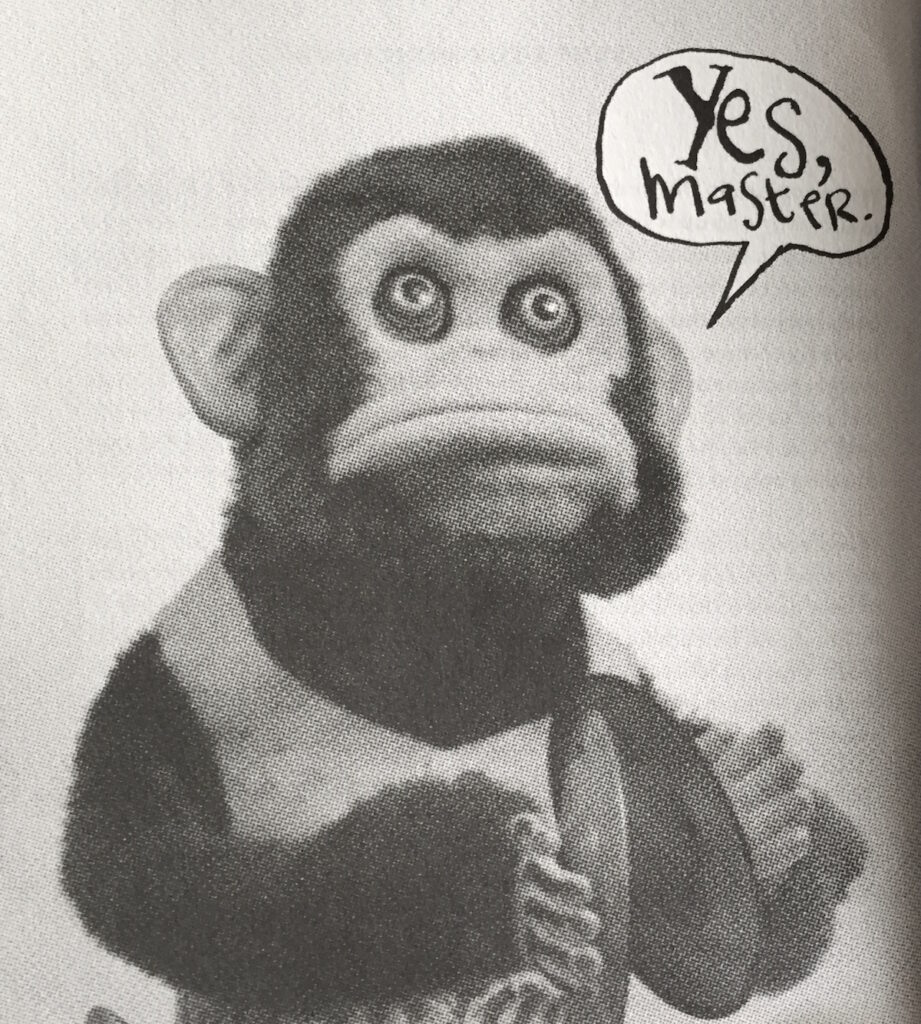
Even Danny, one of the most creative individuals on the planet, has had to work hard to overcome these thoughts. He said it was never truer than when he was writing this very book, saying:
“Writing this book has been a constant struggle with the monkey. It’s been like autopsying a wild animal while it’s still alive. I have had self-doubt at every step of the way. The monkey does not like being discussed and will fight me the more I turn up the heat. I have continued because this process feels important. I believe that we need creative solutions to the world’s many problems and to make all our lives better. I also believe that the monkey is inhibiting great creative solutions every day. So it feels like I’m doing a service by raising and exploring this issue, even if it means enduring some monkey bites along the way.”
Danny says what kept him going was focusing on being productive. In his experience, the less introspective he is, the less time he has to worry about performance or quality, and the quieter the monkey becomes.
So, the next time you’re plagued by fear when starting something new, just do it anyway. Do this enough and the monkey will eventually get used to you ignoring it and will pop up less often.
There are many more tips I want to share with you from this fantastic book. Be sure to grab a copy to learn what other animals live inside you (the bee! the lion!), how van Gogh and Picasso dealt with their monkeys, and why failure just might be the best thing to ever happen to you.
Hear Danny speak this summer!
If you want to hear even more from Danny, be sure to sign up for the Summer 2016 Art Ed Now Online Conference. Danny will be speaking about how to get your students over the fear of creating with a sketchbook assignment they’ll actually want to do. He has such a fun idea to share. I know you’re going to love it. Head here to learn more about Danny and the other Featured Presenters we’ve already released!
Thanks so much to Danny for sharing his expertise with us. If you need more Danny and art making in your life, check out his innovative Sketchbook Skool. And, if the thought of sharing your work with others in an online format scares you, shut your monkey!
Magazine articles and podcasts are opinions of professional education contributors and do not necessarily represent the position of the Art of Education University (AOEU) or its academic offerings. Contributors use terms in the way they are most often talked about in the scope of their educational experiences.
